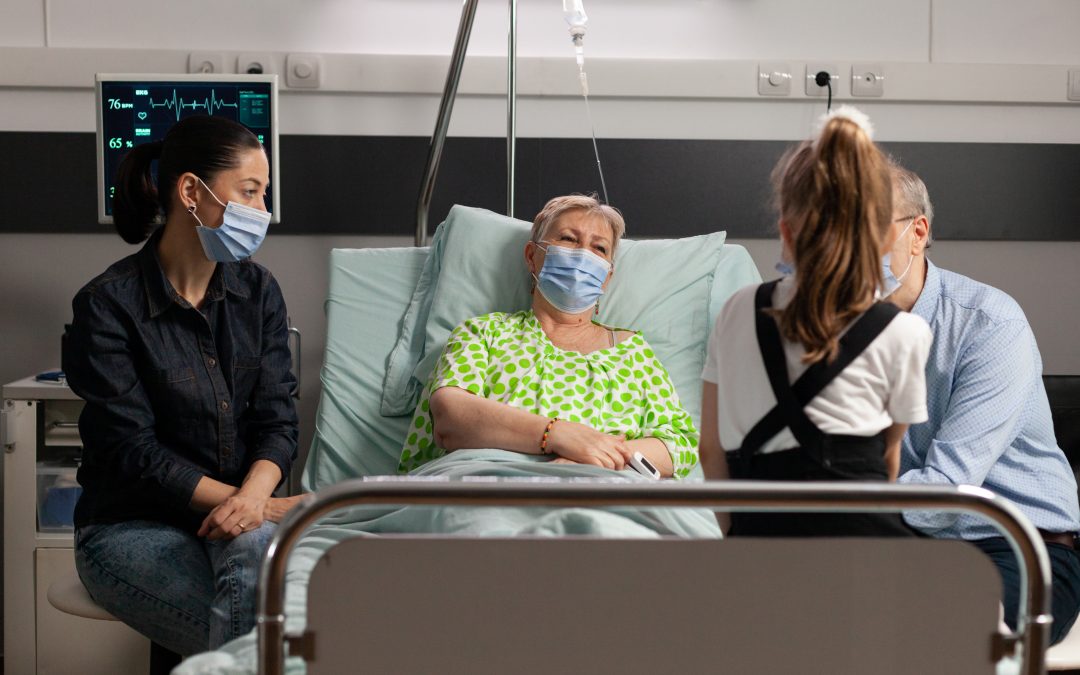The CMS (Centers for Medicare and Medicaid) mandates rules concerning visitation in nursing homes during the COVID-19 Public Health Emergency. Since the government provides federal oversight for nursing homes, as well as for long-term health care facilities, they have the authority to enforce these rules. Their rules are constantly being amended in response to the public pandemic of Covid-19 and the variant strains of Covid-19.
Visitor Tracking In Long Term Care Facilities
Visitor tracking refers to the tracking and screening of visitors to these facilities. The CMS along with the CDC requires that all individuals who enter a facility be screened. This includes requiring covid screening questions about a person’s health and whether they have been in close proximity with anyone who may have Covid-19 during the prior 14 days. This visitor tracking is due to the fact that the virus is easily spread through physical contact and needs to be controlled.
The CMS reasons that if ill individuals are not allowed near the residents of a facility, the spread of the virus will be slowed. Fewer residents will be at risk, thus ensuring the safety of all of the residents and staff.
It is an accepted fact that many carriers of Covid-19 are asymptomatic. However, these regulations should help control the incidence of Covid. If only 10% of the persons who have covid are stopped from entering a facility due to the covid-19 questionnaire, then there are 10% fewer individuals who can spread the virus.
CMS Guidance On Visitor Tracking
The Department of Health and Human Services for the CMS (Centers for Medicare and Medicaid Services) announced a revised memorandum on 4-27-2021 concerning guidance to track nursing home visitors. This memorandum is of the utmost importance to long-term care facilities as well as to nursing homes.
The memorandum updates the visitation guidance for the CMS and continues to maintain infection prevention practices. Although many individuals have received the vaccination for Covid-19, the Principals of Infection Control is still of paramount importance.
Temperature checks and covid screening questions are an integral part of this visitor screening. The temperature of all visitors, including delivery personnel and those working in and about the facility, needs to be checked and recorded in case there is an outbreak of Covid-19 at the facility. Facilities are encouraged to limit the movement of visitors within their facility. By visitor tracking, a facility will be better able to monitor a visitor’s health and adhere to infection prevention in the facility.
lt is a challenge to keep patients and residents safe while at the same time being cognizant of the fact that residents respond positively to their visitors. Visitors are an important part of keeping residents mentally vibrant and gives both them and their family members a feeling of well-being.
Per the CMS:
CMS Visitor Regulation Updates
Visitors and residents/patients should be screened for and restricted according to the following:
- Fever or symptoms of a respiratory infection such as cough or sore throat.
- International travel within the last 14 days to CDC Level 3 risk countries. For information on restricted countries visit: https://www.cdc.gov/coronavirus/2019-ncov/travelers/index.html
- Contact with someone with known or suspected COVID-19 in the past 14 days.
A nursing home can ban visitors with fever, cough, sore throat, body aches, or running nose and visitors who are not following infection control guidance. Facilities should screen and limit visitors with recent trips on cruise ships (last 30 days) or international travel to certain countries (last 14 days). Other limitations may include restricting the number of visitors per patient, limiting visitors to only those that provide assistance to the patient, or limiting visitors under a certain age.
Facilities should limit entry points for all visitors and/or establish alternative sites for screening prior to entry. Facilities should provide signage at entrances for screening individuals, provide temperature checks / ask about fever, and encourage frequent hand washing and use of hand sanitizer before entering the facility and before and after entering patient rooms. Facilities should instruct visitors to limit their movement within the facility (e.g., reduce walking the halls, trips to cafeteria, etc.) and facilities should consider closing common visiting areas and encouraging patients to visit with loved ones in their patient rooms.
Healthcare workers providing care in a home setting should provide education on infection control procedures and COVID-19, as well as maintaining clean equipment and supplies to minimize surface transmission risks.
Please note that in these changing times, the CDC and CMS are constantly upgrading their requirements and guidance. It is imperative that each facility understand the guidelines from their state and for their type of facility.

